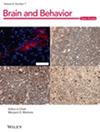A Mendelian Randomization Study and Experimental Validation Investigating the Potential Relationship Among Interleukin-6 Receptor Subunit Beta, Obesity, and Alzheimer's Disease
Abstract
Objective
This study employs Mendelian randomization (MR) aimed at systematically evaluating the relationship among interleukin-6 receptor subunit beta, obesity, and Alzheimer's disease (AD). We conducted animal studies to validate the reliability of the MR analytical outcomes.
Methods
The pooled data for the interleukin-6 receptor subunit beta originated from the genome-wide association study (GWAS) dataset, which included a total of 10,534,735 participants. Obesity pooled data were from the GWAS dataset (case n = 23,971 and control n = 388,084) and AD pooled data from the GWAS database (case n = 39,106 and control n = 46,828). The aforementioned data sets facilitated MR causal analysis. First, utilize the inverse variance weighting (IVW) method for analysis and enhance it with MR-Egger regression and weighted median approaches, and a sensitivity analysis was performed by MR-multiple effect residuals and outliers (MR-Presso), Cochran Q test, and Leave-one (LOO) analysis. We established an obesity model by feeding 6-week-old male ApoE−/− mice a high-fat diet for 16 weeks. In contrast, C57BL/6 control mice were fed a normal diet for the same duration. An AD model was established by feeding 3-month-old APP/PS1 mice a normal diet for 24 weeks. We harvested serum and hippocampal tissue from the mice for enzyme-linked immunosorbent assay (ELISA).
Results
MR analysis indicated that a genetically predicted increase in interleukin-6 receptor subunit beta raises the risk of AD (OR = 1.064, 95% CI: 1.021–1.109, p = 0.003). The exposure factor interleukin-6 receptor subunit beta served as a protective element against obesity (OR = 0.9372,95%CI:0.8921–0.9847, p = 0.010). Obesity showed an adverse relationship with AD. As the body mass index (BMI) increased, the risk of developing AD decreased (OR = 0.9299, 95% CI: 0.8939–0.9674, p <0.001). ELISA findings revealed that the levels of interleukin-6 receptor subunit beta (gp130), oncostatin-M (OSM), and IL-6 in serum and hippocampus decreased in obesity, whereas they increased in AD, aligning with the results of the MR Analysis.
Conclusion
In summary, our extensive Mendelian randomization data suggest that increased levels of the interleukin-6 receptor subunit beta may be associated with a reduced risk of obesity, and consequently, may increase the risk of AD.


 求助内容:
求助内容: 应助结果提醒方式:
应助结果提醒方式:


